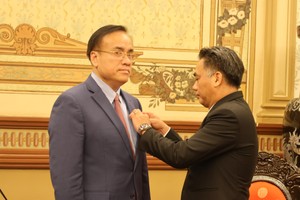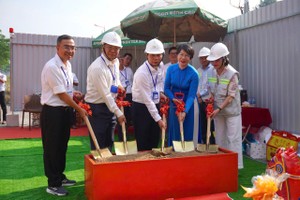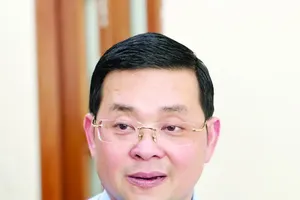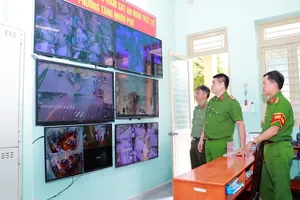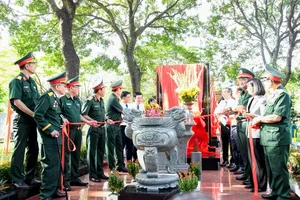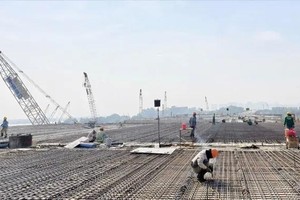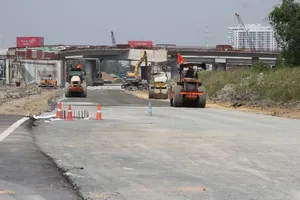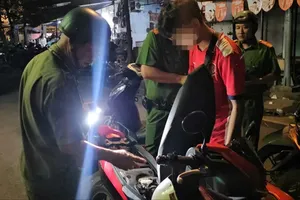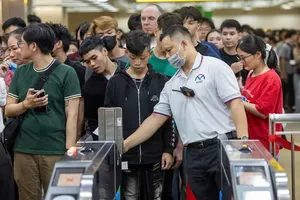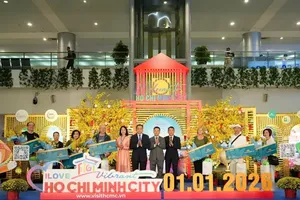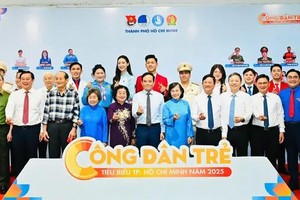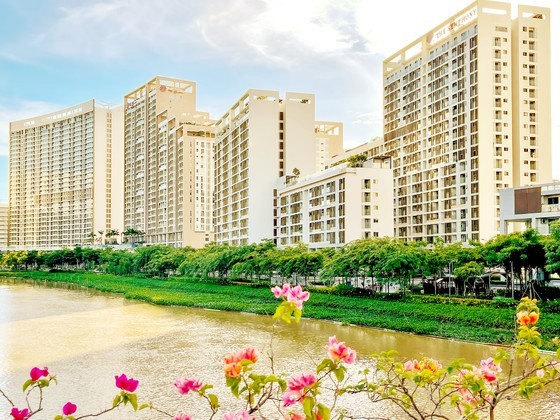 |
A new residential area in Tan Phu Ward of District 7 (Photo: SGGP) |
Reports by the HCMC People’s Committee sent to the Standing Committee of the municipal Party’s Committee about the results so far of the scheme ‘Accommodation Development in the 2021-2030 Period’ show that the newly built floor area for residential purposes in the city in 2021 exceeded the target to reach 4.9 million m2, 76 percent of which were individual houses, and the rest were apartments in commercial projects.
In 2022, the figure was 8.45 million m2, also exceeding the target by 28 percent. Nearly three-fourths of that were still individual houses. In the first half of 2023, there was 1.98 million m2 of newly built residential floor area, accounting for 16.1 percent of the yearly target. The vast majority of that (94 percent) was individual houses, and no floor area for social housing purposes was constructed.
Many locations in the outskirt districts of Tan Binh, Tan Phu, 12 have seen quick growth of residential areas with basic infrastructure going along. Houses here are mostly narrow and tubular-shaped, erected along low-quality streets or canals. The result is the appearance of thousands of alleys full of residents but with limited traffic and drainage systems.
Normally high places like Go Van District are now frequently flooded after rain. Other streets in Thu Duc City such as Kha Van Can, Duong Van Cam, Ho Thi Tu also regularly suffer severe urban flooding.
Another survey by traffic experts reveals that the velocity of two-wheel vehicles at peak hours in major routes in HCMC like Truong Chinh, Hoang Van Thu (Tan Binh District), Phan Dang Luu, Nguyen Kiem (Phu Nhuan District), Au Co, Luy Ban Bich (Tan Phu District), Bach Dang (Binh Thanh District) is only 8-10km/hour. During serious congestion, this velocity even drops to less than 3km/hour. The speed of cars is also 6-8km/hour, equal to the velocity of a pedestrian.
 |
Illegally built houses encroaching Ong Lon Canal in Ward 1 of District 8 (Photo: SGGP) |
Economic expert Dr. Huynh The Du cited the successes of Singapore and the Republic of Korea in urban development. In 1960s, Singapore met the same problem as HCMC does now, and applied the policy to encourage apartment accommodation equipped with high-quality facilities instead of individual houses. The Republic of Korea followed a similar trend. Both were able to save a great amount of land for public facilities, green space, and traffic systems. In the latter case, apartments account for nearly 80 percent of all accommodation. HCMC should consider these examples in the urban development process.
Architect Do Viet Chien, Vice President and General Secretary of the Vietnam Real Estate Association, voiced that urban growth means the establishment of new areas fully equipped with residential structures as well as social and technical infrastructure.
HCMC is aware of this and is promoting the switch from constructing individual houses to apartment buildings. It is encouraging real estate businesses to build social housing for sale or rent, aiming at low-income people, especially households now living along canals or inside outdated apartment buildings that need relocating.
For a sustainable urban development in HCMC, Dr. Vo Kim Cuong, former Deputy Chief Architect of the city, proposed that HCMC should consider implementing the Transit-oriented Development (TOD) model, where public transport is the foundation for urban planning and the focal point of residential areas in order to increase the performance of land use and decrease traffic congestion, environmental pollution.
Dr. Huynh The Du informed that most houses in several districts of HCMC, especially the outskirt area, are two-or-three-floor structures. If this height is raised to 10 floors, the residential area will drop to only one-third, and the rest will be allocated to traffic use, public parks, and common facilities of each apartment building. At that time, the city will become greener and more modern.
The transformation from tubular-shaped houses and private vehicle use in HCMC now to vertical accommodation and public transport use should be a priority when preparing the master planning of the city. Otherwise, it will be extremely challenging for the city to become more modern and competitive against other cities in the region.
